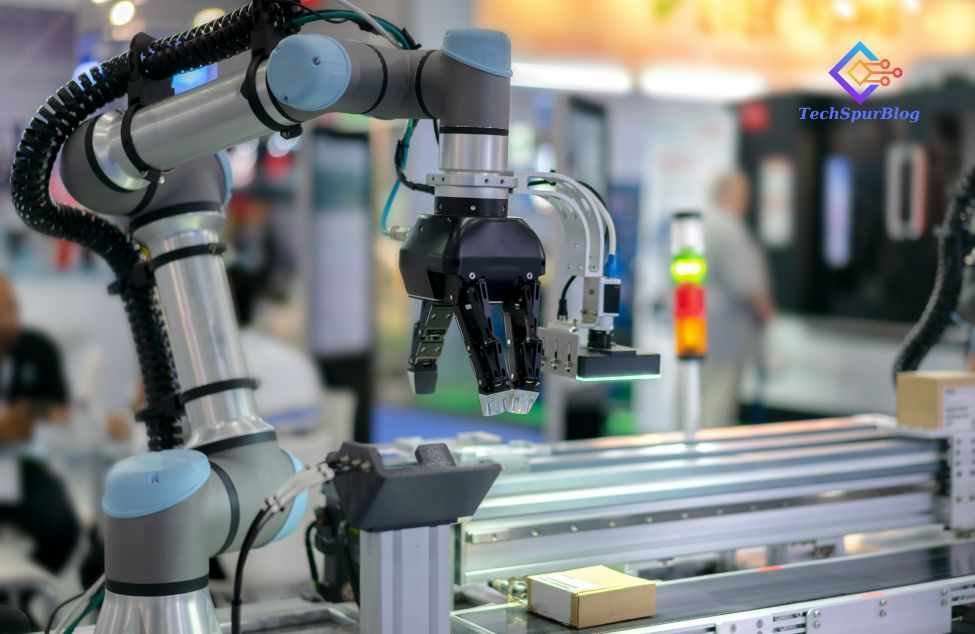
The manufacturing industry is evolving rapidly, driven by technological advancements that are reshaping how products are made and assembled. Among these advancements, the rise of collaborative robots, or cobots, stands out as a transformative force. Unlike traditional industrial robots, cobots are designed to work alongside human workers, enhancing efficiency, improving product quality, and offering a flexible solution to modern manufacturing challenges.
Key Benefits of Collaborative Robots in Manufacturing
One of the most significant advantages of cobots is their ability to operate continuously without fatigue. Unlike human workers, cobots can work around the clock, increasing production rates and throughput. They are particularly effective in tasks that require high precision and consistency, such as assembly, welding, and painting. By taking on these tasks, cobots help manufacturers achieve higher levels of efficiency and productivity.
Moreover, cobots can be programmed to perform multiple tasks, making them versatile assets on the production floor. This adaptability is crucial in today’s manufacturing environment, where products and processes are constantly evolving.
Improving Product Quality
Cobots excel at ensuring consistency and precision in manufacturing processes, which directly impacts product quality. By eliminating human error, cobots help maintain strict quality control standards, reducing the likelihood of defects and rework. This capability is particularly valuable in industries where even minor deviations from specifications can have significant consequences, such as aerospace, automotive, and electronics manufacturing.
In addition to improving quality, cobots also enable continuous quality inspection during production. This real-time monitoring helps identify and address issues before they escalate, further enhancing product quality and reducing waste.
Also Read: BetaVolt’s Nuclear Batteries Promising 50 Years of Life on a Single Charge
Flexibility and Scalability in Production
The flexibility of cobots is another key benefit that sets them apart from traditional automation. Cobots can be easily integrated into existing production lines and quickly reprogrammed to handle new tasks as needed. This flexibility is particularly valuable in industries where production volumes and product designs can change rapidly.
Cobots also offer scalability. As a manufacturer’s needs grow, additionalcobots can be added to the production line without requiring significant changes to the overall system. This scalability allows manufacturers to respond to market demands more effectively and efficiently.
Cost-Effectiveness
While the initial investment in cobots is lower than that of traditional industrial robots, the long-term cost savings can be substantial. Cobots reduce labor costs by taking on tasks that would otherwise require additional human workers. They also minimize downtime by working continuously and reducing the likelihood of errors and defects that can lead to costly rework.
Furthermore, cobots require less space and infrastructure compared to traditional robots, resulting in lower installation and maintenance costs. These factors make cobots a cost-effective solution for manufacturers looking to optimize production without compromising quality or flexibility.
How Cobots Optimize Production
Cobots are revolutionizing assembly line automation by taking on tasks that require precision and consistency. For example, in the automotive industry, cobots are used to assemble components with high accuracy, reducing the likelihood of defects and ensuring that each part meets stringent quality standards. This level of precision is difficult to achieve with human workers alone, making automotive robots an invaluable asset on the assembly line.
In addition to improving accuracy, cobots also increase the speed of assembly tasks. By working alongside human workers, cobots can perform repetitive tasks faster and more efficiently, freeing up human workers to focus on more complex activities.
Quality Control and Inspection
Quality control is another area where cobots excel. Equipped with advanced sensors and imaging technology, cobots can perform detailed inspections of products during the manufacturing process. This real-time inspection capability helps identify defects early, reducing the need for costly rework and ensuring that only high-quality products reach the market.
Cobots can also be programmed to perform specific inspection tasks, such as measuring dimensions, checking surface quality, or detecting anomalies. This level of precision is particularly valuable in industries where quality control is critical, such as aerospace, electronics, and medical device manufacturing.
Material Handling and Packaging
Cobots are also transforming material handling and packaging processes. In manufacturing environments where heavy lifting and repetitive motion are common, cobots can take on these tasks, reducing the risk of injury to human workers. Cobots can handle a wide range of materials, from small parts to large components, with ease and precision.
In packaging, cobots improve efficiency by automating tasks such as packing, labeling, and palletizing. By reducing the time and effort required for these tasks, cobots help manufacturers meet tight deadlines and deliver products to market faster.
Also Read: Basic Components of Robotics | Elements and Structure of a Robot
Custom Manufacturing and Small-Batch Production
The ability of cobots to adapt to new tasks quickly makes them ideal for custom manufacturing and small-batch production. In industries where products are made to order or require frequent design changes, cobots offer the flexibility needed to meet these demands. Cobots can be reprogrammed or reconfigured to handle different tasks, making them a versatile solution for manufacturers with diverse production needs.
This flexibility also supports the growing trend of small-batch, personalized production, where manufacturers produce limited quantities of customized products. Cobots enable manufacturers to meet these demands efficiently without compromising quality or increasing costs.
Conclusion
Collaboration robots are not just a trend; they are a fundamental shift in how manufacturing is done. By enhancing efficiency, improving product quality, and offering unmatched flexibility, cobots are optimizing production processes and enabling manufacturers to meet the demands of a rapidly changing market.
As technology continues to advance, the role of robots in manufacturing will only grow, offering new opportunities for innovation and collaboration.

Leave a Reply